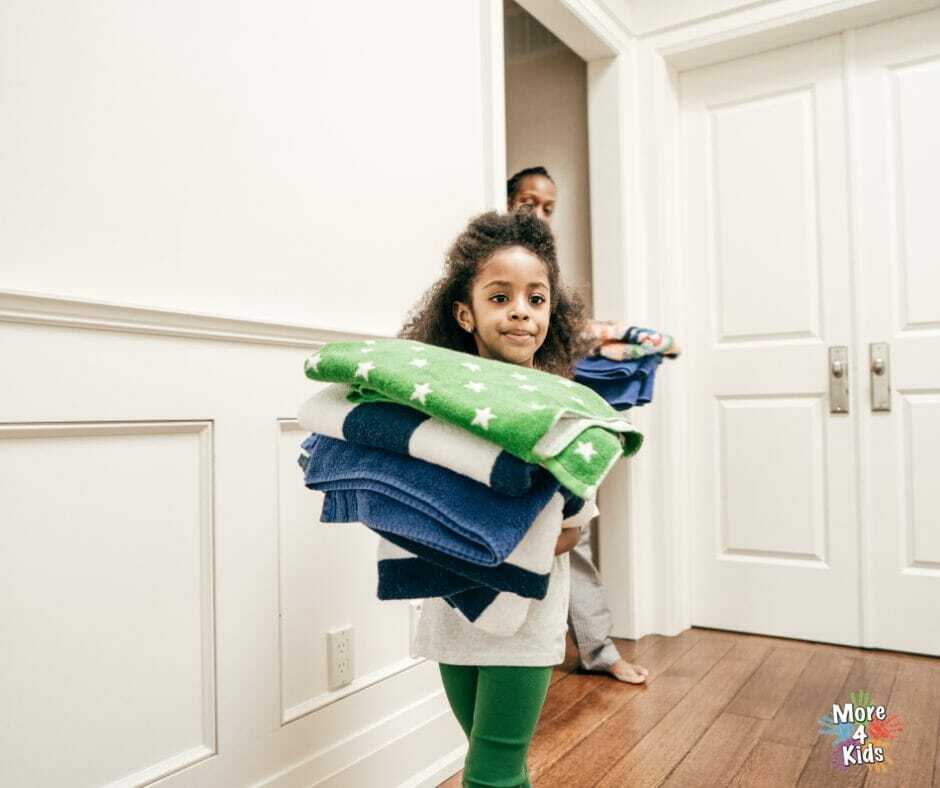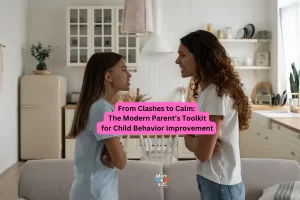If only parenting were just the way we imagine it before ever having kids! “My kids will never do that,” we say when we see a two-year-old melting down in the grocery store or a twelve-year-old snapping at his mother. We envision cuddly stories before peaceful and calm bedtimes, fun romps at the playground with everyone obediently coming when it is time to go, and no burping contests at the dinner table (especially with your delicate daughter as the uncontested winner). Then reality intervenes in the form of loud, messy, dirty children who have (gulp) minds of their own. And we parents have to give up our dreams of perfect children (how fun would they be, anyway?) and start on the sometimes exhausting but ultimately fulfilling process of imposing discipline on our youngsters so they can evolve into caring, responsible, self-disciplined adults.
What is discipline? First of all, it is not punishment, although punishment is a type of discipline. In fact, punishment is probably the type of discipline most of us grew up with. Punishment involves setting unpleasant, possibly even painful, consequences on a child for past misbehaviors. It can be physical, as in spanking, or psychological, as in shaming and name-calling. What it is not, however, is effective in the long run.
More positive types of discipline teach children self-control and confidence. They focus on present and future behavior, teaching children what behavior is okay and what is not okay. Discipline helps children learn self-control and take responsibility for their own behavior. Barbara Coloroso, author of Kids Are Worth It explains that discipline shows children what they did wrong, gives them ownership of the problem, and gives them ways to solve the problem.
Parents have many options for introducing discipline to their children. The American Academy of Family Physicians suggests the following discipline techniques:
Positive reinforcement
Positive reinforcement focuses on rewarding good behavior, especially with attention. Catch your kids doing something right and reward them with thanks and praise. If there is a particular behavior you want to reinforce, set up a reward chart with your child. For example, if your daughter makes her bed every morning, she gets a sticker on her chart. After a certain number of stickers, she gets to choose a reward, such as time playing a game with you.
It is also important that you ignore your children’s negative behavior as much as possible or use time-outs to deal with it. Time-outs involve physically removing your child from a problem situation. To give your child a time-out, send him to a boring area, such as a corner of the room with no toys or television. Then ignore him until he is calm and quiet. A key to time-outs is keeping them short, usually one minute per year of life and no more than five minutes. Time-outs work well along with positive reinforcement because you are not rewarding your child with attention for negative behavior.
Redirecting
This technique means you redirect your child to appropriate behavior. This is especially useful for young children. For example, when your three-year-old is banging silverware on the table at a restaurant, you redirect her by starting a game or “I Spy” until your food arrives.
Verbal instruction
Talking to your child about what behavior you expect and why is helpful for older children. Instruction is always a good idea before leaving your children with a babysitter and before special events such as a wedding, funeral, or party. It can even be a good idea to review your behavior expectations before regular activities such as going into a grocery store or library. It may seem obvious to us that we use “inside voices” and “walking feet” in the grocery store, but it never hurts to remind your kids in advance. (Just don’t lecture–your kids will tune you out.)
House rules
House rules are a great technique because they remove any opportunity for your children to argue. When they watch TV before doing homework, you can impose a consequence and say, “Homework before TV. House rules.”
House rules work best when you keep them simple and children get to help set them. And be prepared to repeat them until your children learn to follow them on their own.
Grounding and withholding privileges
Grounding and withholding privileges are probably the most common discipline techniques used with school-age children and teenagers. These techniques teach them that that privileges come with responsibility and need to be earned.
Logical Consequences
This discipline technique means you stop trying to protect your children from every unpleasant consequence in life and let them feel the consequences of their actions. They forget their lunch and instead of delivering it to school, you let them go hungry that meal. They forget to put their clothes in the hamper and you don’t wash them.
Using logical consequences helps children learn responsibility and keeps the focus on the child’s behavior.
Which of these discipline techniques is right for you and your family? Maybe all of them, maybe none of them. See what works for your children and stay flexible. You will need to change your approach to discipline approach over time as your child matures and becomes more independent and responsible.
Stacey Schifferdecker is the happy but harried mother of three school-aged children—two boys and a girl. She is also a freelance writer, a Children’s Minister, a PTA volunteer, and a Scout leader. Stacey has a Bachelor’s degree in Communications and French and a Master’s degree in English. She has written extensively about parenting and education as well as business, technology, travel, and hobbies.
No part of this article may be copied or reproduced in any form without the express permission of More4Kids Inc © 2006












We practice the Love & Logic approach in my daycare. Each child is given a clothes pin and if they are acting up they have to move the close pin into the yellow, and so on. If they show very good behavior they have the chance to move their clothes pin back. After several moves of the clothes pin and they are in the red they have to stand in the unhappy face box, depending on their age, how long. We were told by the state that this was not appropriate. What is your feeling on this?